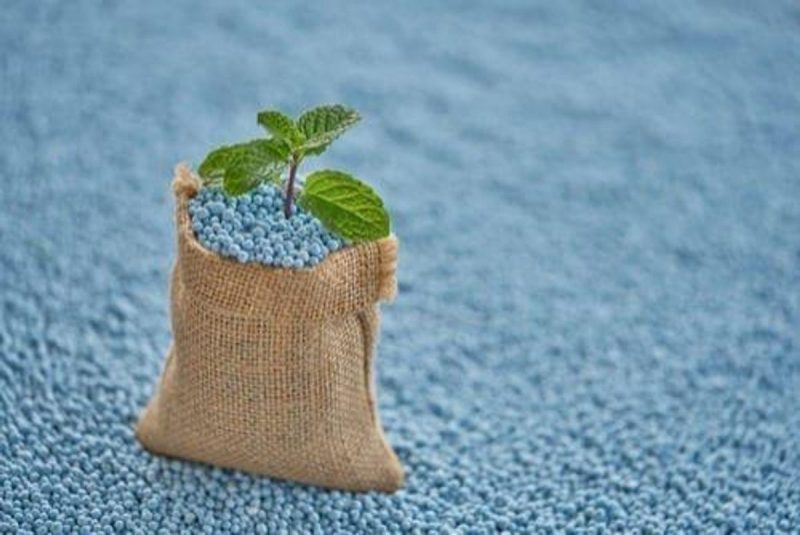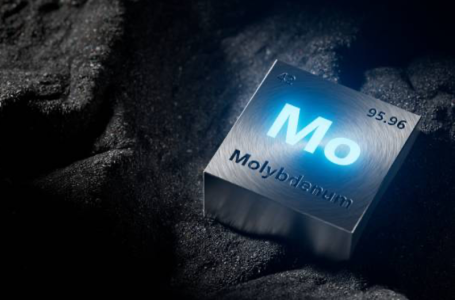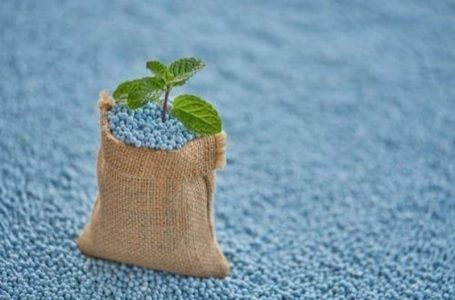How to Invest in Potash Stocks






The world’s population is increasing rapidly and is expected to reach over 9.7 billion by 2050.
This situation is creating positive fundamentals for the agricultural sector, including the potash market. A larger population means much higher amounts of food will be needed; however, with more people will come further urbanization and less farmland with which to work, meaning farmers will have no choice but to increase crop yields.
That’s where fertilizers like potash come in. Unsurprisingly, many investors are wondering what potash is and how they can gain exposure to the potash market. Read on to find out more about potash investing, and whether it may fit into your portfolio.
In this article
What is potash?
Potash is a term that refers to compounds and minerals that contain potassium salts. It is naturally white or colorless, but ore sometimes takes on a pink or red color due to impurities such as clay. Most potash comes from salt left over from ancient evaporated seas that lie underground.
There are several different types of potash, including sulfate of potash (SOP) and muriate of potash (MOP), which contain potassium sulfate and potassium chloride respectively.
What is potash used for?
Potash is most commonly used in fertilizers. All in all, 95 percent of the world’s potash supply is used to grow food. Potash fertilizer not only provides essential nutrients to food, but also improves water retention in plants and strengthens their roots and stems.
SOP is used on high-value crops, such as a variety of fruits and vegetables, nuts, tea, coffee and tobacco, and is seen as premium quality. MOP is more common, and is typically used on vegetables such as sugar beets, celery and Swiss chard.
Potash supply trends
According to the US Geological Survey’s latest data on potash, global potash production came in at 48 million metric tons (MT) in 2024 and consumption totaled 38.8 million MT. The potash sector is suffering from oversupply, and that has created lower prices and put pressure on potash producers.
The potash market has faced volatility in recent years, particularly from geopolitical conflicts. The agency estimates that in 2022 potash fertilizer demand decreased to between 35 to 39 million tons from 40.6 million tons in 2021 as a result of the Russian-Ukraine war.
Canada stands out as the top potash-producing country with output of 15 million MT in 2024, the vast majority of which was from the province of Saskatchewan.
Russia is the world’s second largest potash producer, with output of 9 million MT in 2024. Reclaiming its spot as the third largest producer, Belarus’ potash output rose to 7 million MT in 2024. It had fallen significantly in the prior two years, and it ranked at fourth place in 2023 with production of 4.5 million MT.
Russia’s war in Ukraine and its use of Belarus as a staging ground have led to export sanctions on the two countries, which prior to 2022 accounted for a combined 40 percent of global potash supply. In 2024, that figure was 33 percent.
All eyes will be on the Canadian potash market in 2025 as US President Donald Trump has threatened up to 25 percent tariffs on all goods imported from Canada into the United States. While he delayed the tariffs by one month in early February, it remains to be seen whether they’ll ultimately still be enacted.
Tariffs on Canadian potash would likely result in higher costs for US farmers and consumers at the grocery store, as Canada represents more than 86 percent of annual US potash imports, according to Josh Linville, vice president of fertilizer at StoneX.
Potash demand trends
Potash demand is expected to climb in the coming years. Precedence Research expects the world’s potash market to grow at a compound annual growth rate (CAGR) of 4.93 percent between 2024 and 2033 to reach US$97.15 billion.
The firm’s analysts attribute this stable growth in potash demand to increasing levels of economic development and rising per capita food consumption as the world’s population continues to rise.
“The demand for potash is significantly influenced by emerging economies such as China, India, and Brazil, which have sizable agricultural industries,” the report states.
Population growth is subsequently leading to increased urbanization and less available agricultural land. Other demand side trends for potash include the growth in sustainable agricultural practices and technological advances in agricultural science like genetically modified crops and precision farming.
In terms of regional demand, Asia Pacific represents the largest market share coming in at 38 percent in 2023. Governments in the region are enacting policies and subsidies to encourage potash use among farmers in order to generate higher crop yields to feed growing populations.
The North American market is expected to experience the most rapid growth over the forecast period, with a CAGR of 5.11 percent. In this region, potash is a necessary component for sustained agricultural output as many areas of the continent have nutrient-deficient soils.
How to invest in potash
For investors interested in the potash space and encouraged by its outlook, there are a number of entry points for investing in the potash market, including potash stocks and potash ETFs. We take a look at both ways to invest in potash below. All data and information was current as of January 30, 2025.
Potash stocks
There are many potash stocks to consider, so it’s important to do your research. There are a number of publicly traded mining companies with shares listed on major exchanges including the TSX, ASX and the NYSE. Investors often choose to begin with large producers in the potash sector. All stocks discussed below had market caps above $5 million in their respective currencies at the time data was collected.
Major potash mining stocks
BHP (ASX:BHP,NYSE:BHP,LSE:BHP)
BHP is a multinational diversified mining company developing the Jansen potash mine in Saskatchewan. It is set to come online in late 2026, and expected to produce 8.5 million metric tons of potash annually.
Compass Minerals International (NYSE:CMP)
Compass Minerals is a leading producer of SOP in North America. Its SOP plant is located in Wynyard, Saskatchewan, and it produces SOP using large-scale solar evaporation at its Ogden operations in Utah’s Great Salt Lake.
ICL Group (NYSE:ICL)
Israel Chemicals Limited (ICL) Group is a multinational specialty minerals and chemicals company focused on potash, phosphate and advanced specialty fertilizers. The company produces potash from its mines in Israel and Spain.
Intrepid Potash (NYSE:IPI)
Intrepid Potash is the only producer of MOP in the United States. It operates an underground mine and a solar evaporation mine in Carlsbad, New Mexico, as well as solar evaporation mines in Wendover and Moab, Utah.
K+S Aktiengesellschaft (OTCQX:KPLUF,ETR:SDF)
K+S is a Germany-based chemical company and the leading potash supplier in Europe. The company also has production facilities in North America and South America.
Mosaic (NYSE:MOS)
Mosaic is an American chemical company which produces and markets concentrated phosphate and potash crop nutrients. The company’s North America Business is responsible for approximately 34 percent of estimated annual potash production on the continent, and its Belle Plaine mine in Saskatchewan is one of the largest-producing potash solution mines in the world.
Nutrien (TSX:NTR,NYSE:NTR)
Nutrien is Canada’s biggest potash company by far, formed through a merger of Agrium and PotashCorp. The company has a potash production capacity of over 27 million MT from its six potash mines in Saskatchewan.
Junior potash mining stocks
Agrimin (ASX:AMN)
Agrimin is developing its Mackay project in Western Australia, which it says will be shovel ready in 2025. According to the company, the Mackay project contains the world’s largest known undeveloped mineral resources of brine-hosted SOP.
Gensource Potash (TSXV:GSP)
Gensource Potash is developing the Tugaske project in Saskatchewan. Once in operation, the company estimates it will produce a minimum of 250,000 MT of MOP per year.
Highfield Resources (ASX:HFR)
Highfield Resources is advancing on its near-term production stage Muga MOP project in Spain. The project is expected to produce more than 1 million MT of MOP per year.
Karnalyte Resources (TSX:KRN)
Karnalyte Resources is an advanced development-stage company focused on its construction-ready Wynyard potash project in Central Saskatchewan.
Sage Potash (TSXV:SAGE,OTCQB:SGPTF)
Sage Potash is developing its flagship project the Sage Plain potash property in the Paradox Basin of the US state of Utah. Once in operation, the project is estimated to produce 150,000 MT of potash annually, with plans to expand.
Verde AgriTech (TSX:NPK,OTCQB:AMHPF)
Verde AgriTech is an agri-tech company focused on making innovative products that promote sustainable agriculture. Its main asset is Cerrado Verde, which holds Brazil’s largest identified potash deposit, with an NI 43-101 resource of 3.32 billion MT.
Western Resources (TSX:WRX)
Western Potash, a subsidiary of Western Resources, is developing a potash solution mine at its Milestone project in Saskatchewan focused on MOP production. Milestone is close to Mosaic’s Belle Plaine mine.
Potash ETFs
Those who want more broad exposure may want to buy shares of an exchange-traded fund that includes potash stocks. Here are a few to get you started.
VanEck Agribusiness ETF (ARCA:MOO)
VanEck Agribusiness ETF follows the price and yield performance of the MVIS Global Agribusiness Index (MVMOOTR), which tracks the overall performance of companies involved in many areas of agribusiness, including agri-chemicals and fertilizers. The fund’s top holdings include Nutrien and Mosaic.
IShares MCSI Agriculture Producers ETF (ARCA:VEGI)
IShares MCSI Agricultural Producers tracks the investment results of an index composed of global equities of agribusiness companies, including fertilizer producers. Nutrien, Mosaic and ICL Group are among the fund’s top holdings.
IShares Global Agriculture Index ETF (TSX:COW)
IShares Global Agriculture Index ETF seeks to replicate the performance of the Manulife Investment Management Global Agriculture Index. Its top holdings include Nutrien, Mosaic, Intrepid Potash and ICL Group.
Securities Disclosure: I, Melissa Pistilli, hold no direct investment interest in any company mentioned in this article.











